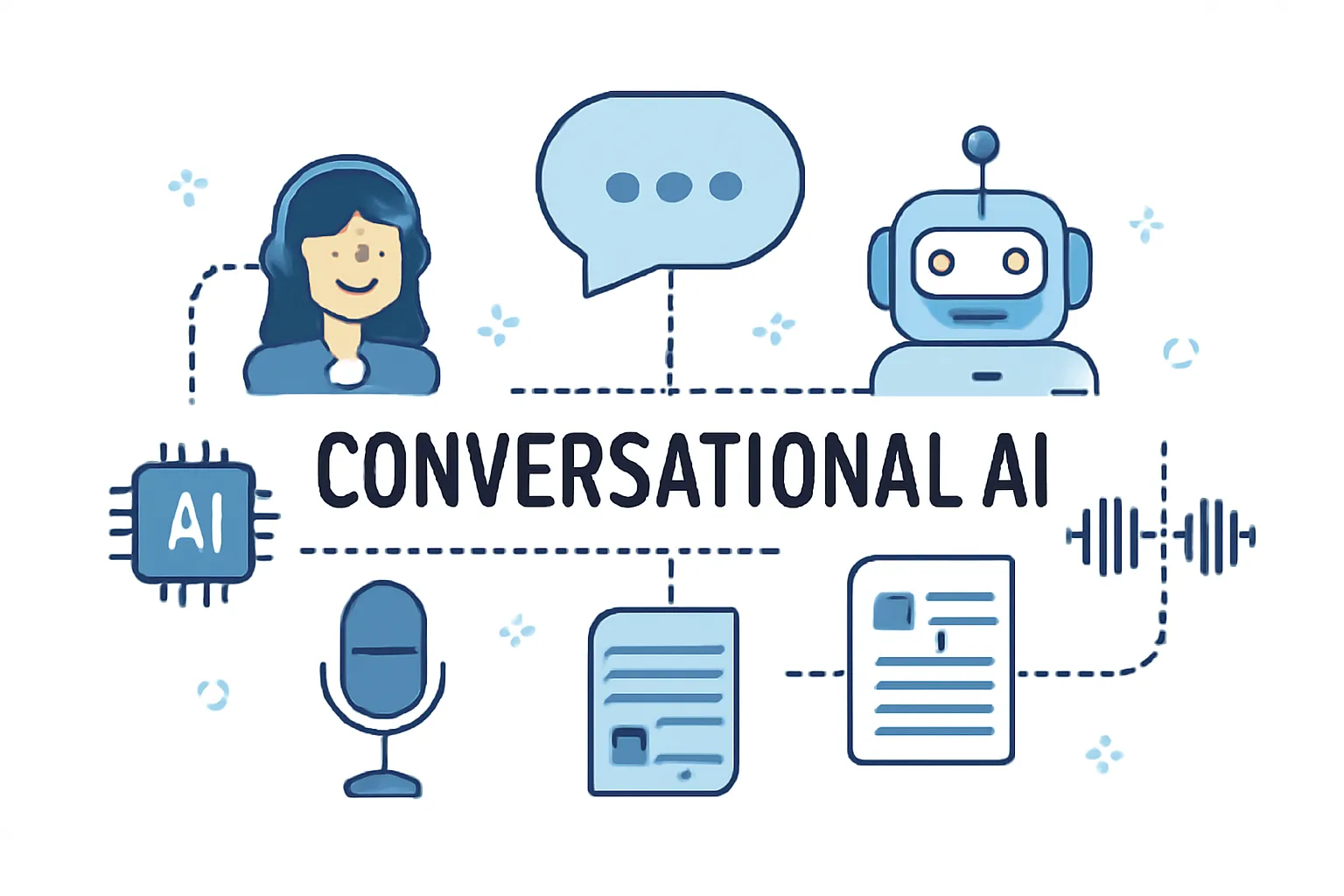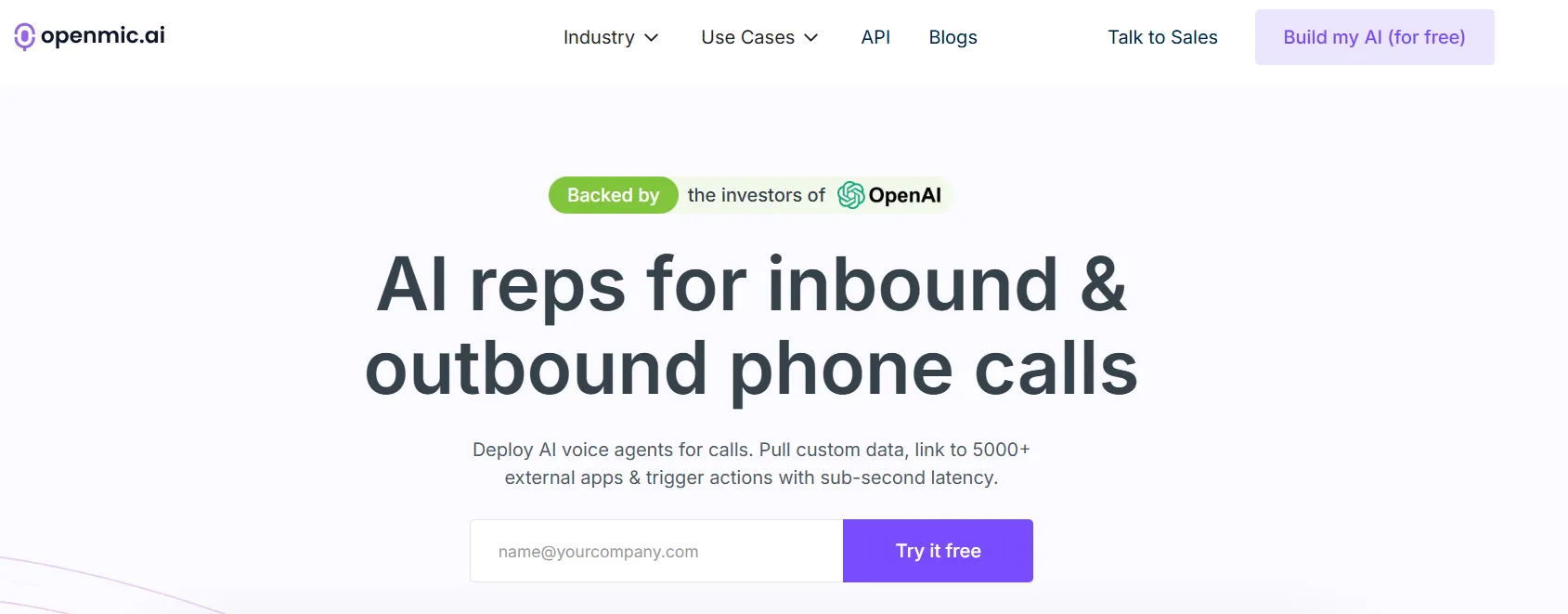.webp)
Conversational AI for Sales Teams: 7 Ways to Drive Revenue in 2025
Sales teams have seen huge changes in the past decade. Technology, especially conversational AI, has become a game-changer for sales. In 2025, sales teams now have powerful AI tools to help them refine their strategies, engage better with customers, and boost sales. In this blog, we’ll explore how conversational AI is helping businesses and sales teams thrive.
Overview of Conversational AI

Conversational AI refers to systems that use technology to understand, process, and respond to human language. These tools use natural language processing (NLP), machine learning, and advanced algorithms to create human-like conversations through text or voice. Some common examples of conversational AI include chatbots, virtual assistants, and customer interaction analysis platforms.
Unlike traditional systems that follow set rules, conversational AI can understand context, track conversations, and provide personalized responses. This makes it incredibly valuable for sales teams. These tools can help businesses interact more naturally with customers, creating better experiences and boosting engagement.
Why Conversational AI is Essential for Sales
Conversational AI isn’t just about automating tasks. It’s about changing the way businesses interact with customers. According to a study by PwC, 73% of global consumers prefer AI for routine customer service tasks. Gartner predicts that by 2025, 80% of business-to-business (B2B) sales interactions will be digital, with conversational AI being a key part of this shift.
These numbers show that businesses and customers are increasingly trusting AI to improve efficiency and customer experiences. Let’s look at how conversational AI drives sales and helps sales teams succeed.
7 Ways Conversational AI Drives Sales in 2025
- Automated Lead Generation and Qualification
Conversational AI can start real-time conversations with website visitors and potential leads. It can ask questions, gather information, and qualify leads. This allows sales teams to focus on high-quality leads that are more likely to convert. For example, Drift’s AI tools help gather lead information and direct qualified leads to the right sales representative. This has helped companies increase lead conversion rates by 30%.
- Personalized Customer Interactions
Personalization is essential in today’s sales world. Conversational AI can analyze customer data, including browsing habits, past purchases, and preferences, to offer personalized recommendations. For example, Amazon’s Alexa for Business provides customized product suggestions based on user data. McKinsey reports that companies using personalized marketing see a revenue increase of 5-15%.
- CRM Integration for Better Insights
When conversational AI integrates with customer relationship management (CRM) tools, it provides sales teams with real-time insights. This integration ensures all customer interactions are stored and organized in one place, making it easier to track leads and anticipate customer needs. Tools like Zoho SalesIQ integrate chat data directly into CRM systems, improving customer tracking and efficiency by over 40%.
- Real-Time Sales Support and Coaching
AI-powered platforms can help sales reps in real-time during customer interactions. For example, AI tools can suggest responses, provide relevant data, and even help sales teams handle objections. Revenue.io’s call coaching feature has helped increase win rates by 27% for its users, allowing them to close deals faster and more effectively.
- Automated Follow-Ups and Scheduling
Automating follow-ups and meeting scheduling can save time and reduce human error. Conversational AI can handle routine tasks like these, ensuring no leads are missed. HDFC Bank’s chatbot, Eva, has handled over 50 million customer queries and helped schedule appointments with 85% accuracy. This has saved the company significant time and costs.
- Upselling and Cross-Selling Opportunities
Conversational AI systems can also help identify upselling and cross-selling opportunities by analyzing customer behavior and past interactions. For example, eBay’s AI-powered chatbot on Facebook Messenger suggests related products to customers, improving the shopping experience and driving sales.
- Improved Sales Forecasting
AI can help sales teams predict future trends by analyzing historical data and real-time customer interactions. With accurate forecasting, sales teams can allocate resources more efficiently and set realistic targets. Salesforce’s Einstein Analytics, for example, uses AI to forecast sales with 90% accuracy, helping businesses make smarter decisions.
Key Benefits of Conversational AI for Sales Teams
- Increased Efficiency
Conversational AI can automate tasks like lead qualification, data entry, and follow-ups. By taking care of these repetitive tasks, sales teams can focus on higher-value activities that directly drive revenue.
- Better Customer Experience
AI helps deliver personalized, instant responses to customers. This improves the overall customer experience, leading to higher satisfaction, loyalty, and repeat business.
- Cost Savings
Conversational AI reduces the need for human agents to handle every customer interaction, leading to lower operational costs. This makes it more affordable for small businesses to implement.
- 24/7 Availability
AI tools can engage with customers at any time, ensuring that no questions go unanswered. This is especially helpful for businesses with international customers across different time zones.
- Data-Driven Insights
Conversational AI provides valuable insights into customer behavior and preferences. By analyzing these patterns, sales teams can adjust their strategies to better meet customer needs and improve sales outcomes.
The Future of Conversational AI in Sales
As AI continues to evolve, there are several exciting trends to watch for in the sales industry:
- Voice-Enabled AI Tools: More sales interactions will take place through voice, making conversations faster and more natural.
- AI-Powered Negotiation Tools: Advanced AI systems will assist in negotiating prices and contracts, offering more sophisticated support during sales discussions.
- Emotionally Intelligent AI: AI systems will become better at recognizing and responding to customer emotions, leading to more empathetic and engaging conversations.
Introducing OpenMIC.AI: A Conversational AI for Sales

OpenMIC is a powerful conversational AI platform designed to improve both inbound and outbound sales phone interactions. It helps businesses streamline operations and improve customer engagement. Here are some standout features of OpenMIC:
- Seamless Integration: OpenMIC connects with over 5,000 applications, making it easy to automate processes without disrupting existing workflows.
- Mass Campaigns: OpenMIC allows businesses to run large-scale phone campaigns, reaching thousands of prospects at once and optimizing outreach efforts.
- Advanced Analytics: OpenMIC’s call analytics provide detailed insights, helping sales teams fine-tune their strategies and achieve better results.
- Scalable Solutions: Whether you’re a small business or a large enterprise, OpenMIC can scale to meet your needs.
- Compliance Excellence: OpenMIC ensures that businesses stay compliant with industry standards, making it easy to meet legal and regulatory requirements.
Businesses across various industries are already benefiting from OpenMIC’s conversational AI capabilities. From reducing operational costs to improving customer satisfaction, OpenMIC is changing how sales and customer service are managed.
Conclusion
Conversational AI is now an essential tool for sales teams in 2025. Its ability to automate tasks, personalize customer interactions, and provide real-time insights makes it indispensable for businesses looking to stay ahead of the competition. By integrating conversational AI into your sales strategy, you can improve efficiency, boost customer satisfaction, and drive consistent revenue growth.
If you’re interested in learning more about AI tools, explore our article on "The Best AI Communication Solutions for San Francisco Businesses in 2025".
Want to improve your sales strategy? Visit OpenMIC.ai today and start building your custom AI voice agent. Take your business to the next level with OpenMIC!
Explore related blogs
.png)
Voice AI for Mass Tort Lawyers: How Conversational AI Is Revolutionizing Case Intake & Client Engagement
.png)
Top 5 AI Answering Services for Law Firms in 2025 (24/7 Reception & Intake)
.png)
Top 5 White-Label Voice AI Platforms in 2025 (Best for Agencies & SaaS Providers)
Let AI Handle Your Phones So You Can Focus on Growth
Start your free trial and see how OpenMic’s AI voice agents can streamline calls, boost conversions, and deliver fast, 24/7 customer service — without hiring more staff.






.svg)